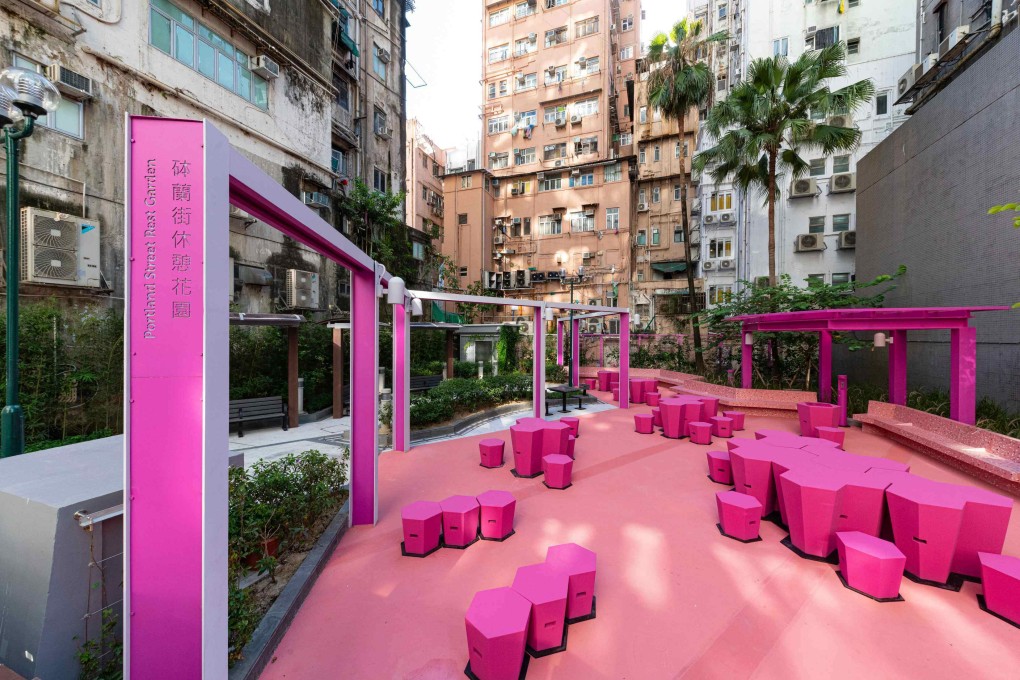Designers take us inside Hong Kong’s latest urban micropark – bright pink, with movable furniture and swaying grasses
- The Portland Street Rest Garden in densely populated Yau Tsim Mong occupies a previously unloved place with scant seating, where men would urinate in the bushes
- Coloured bright pink – to inspire calm, compassion and happiness, designers say – it offers modular furniture, a chess table and recycling bins

Why a pink park? “That’s the question we’re asked the most,” says Marisa Yiu Kar-san, architect and co-founder of the Design Trust Futures Studio.
“We had to work really hard to convince multiple stakeholders of the reasons why pink works really well – it’s a positive colour that represents calm, compassion and happiness. It’s also very energetic and contrasts extremely well with the green of the plants. But, initially, they were horrified by the introduction of this colour.”
A third park – the sitting-out area under the Hill Road Flyover in Shek Tong Tsui at the western end of Hong Kong Island – will follow at the end of the year, with the fourth park, Hamilton Street Rest Garden in Mong Kok, expected to be completed by July 2022.

The Portland Street park works on many levels: it’s a safe public space, a rest stop for commuters, an open-air venue where neighbours can gather, a social space for the elderly (who are the main target users), and an eye-catching piece of urban architecture.